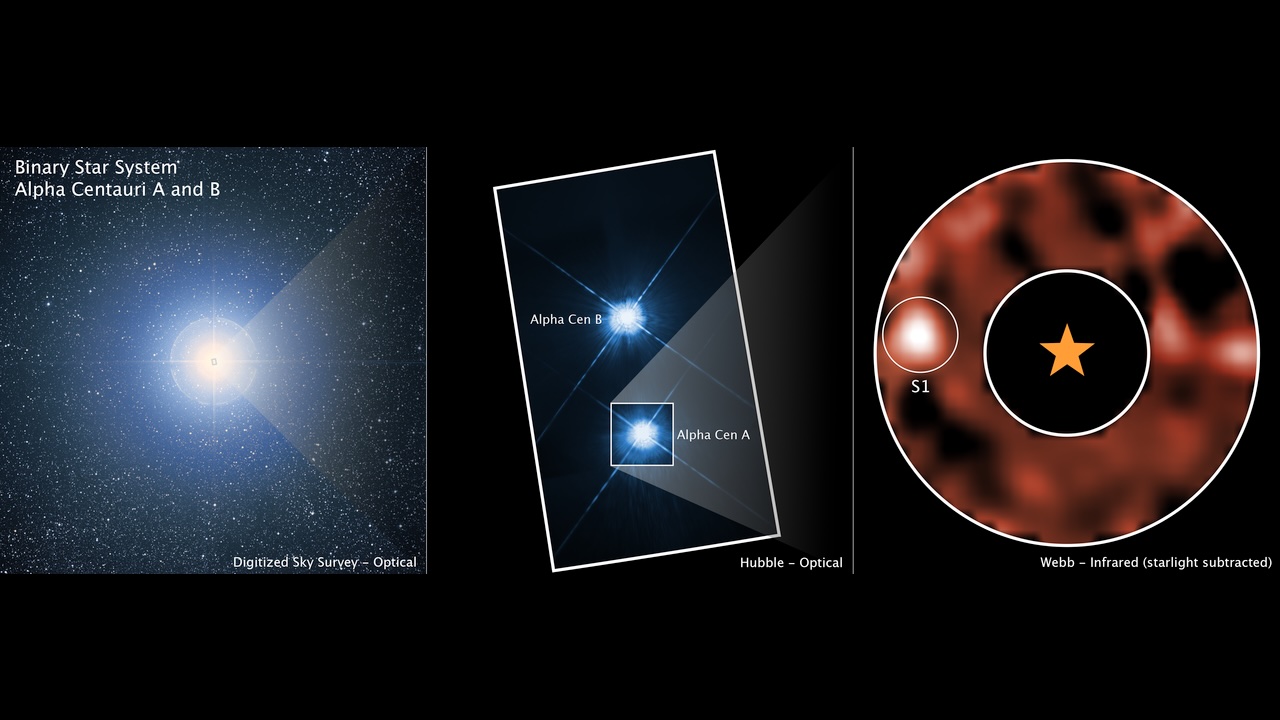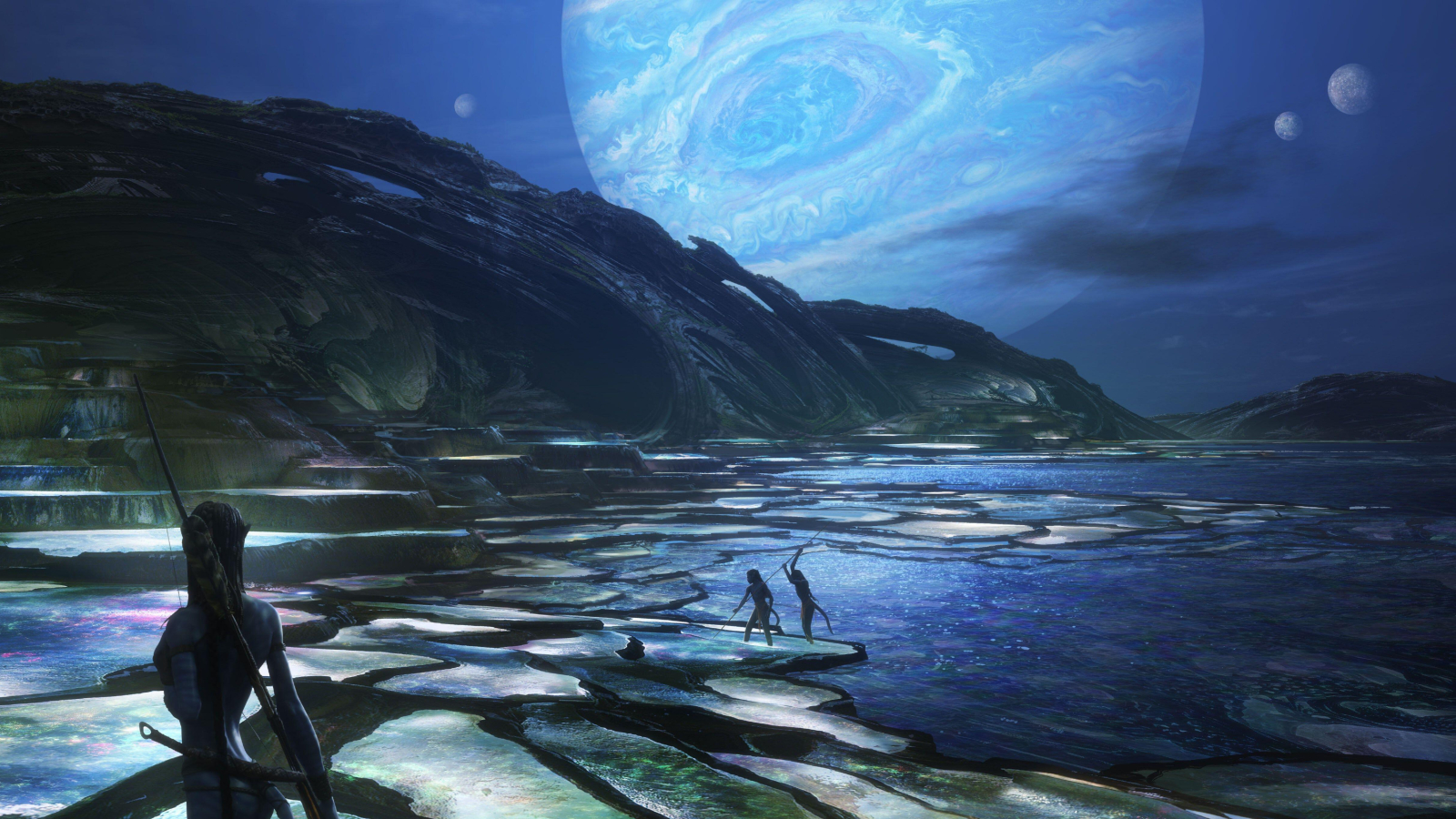A potential gas giant recently discovered orbiting in the habitable zone of one of the closest stars to Earth could have a moon capable of sustaining life — just like the alien world “Pandora” from the “Avatar” movies, researchers have speculated.
However, there is currently no evidence to suggest that such a moon exists or that it could support life. In fact, scientists are still unsure if its host planet is actually where they think it is.
A study published Aug. 11 in The Astrophysical Journal Letters revealed the potential discovery of a Saturn-size gas giant, dubbed S1, orbiting Alpha Centauri A — one of three stars that make up the Alpha Centauri system, which lies roughly 4.25 light-years from our own solar system.
The potential exoplanet, which likely orbits its home star at up to twice the distance between Earth and the sun, was initially spotted by the James Webb Space Telescope (JWST) in August 2024. However, the powerful telescope failed to spot the world again when it was expected to become visible in February and April this year, leading to it being dubbed a “disappearing planet.”
Researchers believe that S1’s orbit may have moved it in front of Alpha Centauri A, making it much harder for JWST to spot the gas giant. By their calculations, it should become visible again in 2026 and 2027, meaning we will need to wait a few more years before we can be certain of its existence.
But if it is eventually confirmed, “It would be the most significant JWST discovery to date,” study co-author Stanimir Metchev, an exoplanet researcher at Western University in Ontario, told Live Science.
Related: Proposed spacecraft could carry up to 2,400 people on a one-way trip to the nearest star system, Alpha Centauri
To date, only two planets have been confirmed within our adjacent neighborhood, both of which orbit Proxima Centauri — the closest star to Earth, which circles the binary star pair of Alpha Centauri A and Alpha Centauri B. But as our closest stellar neighbors, the idea of traveling to Alpha Centauri and potentially establishing a human colony there has long piqued humanity’s interest in both science and science fiction.
The triple stars’ most notable sci-fi inclusion is probably in the “Avatar” franchise, as the home system of Pandora — the fictional homeworld of the blue-skinned aliens, known as the Na’vi, who go to war with humans who invade the moon (which purportedly orbits a gas giant) after traveling to Alpha Centauri on interstellar starships in the 22nd century.
Interestingly, S1 is likely around the same size as Polyphemus, the fictional gas giant orbited by Pandora. And both S1 and Polyphemus also supposedly reside within Alpha Centauri A’s habitable zone, where there are suitable conditions for extraterrestrial life to emerge.
Real-life Pandora?
Until now, the idea that there could be a real-life Pandora in Alpha Centauri seemed like a very long shot. But if S1 is confirmed to be a real planet, there is a high chance that it could have a number of moons.
“I would expect that there are probably moons there,” Mary Anne Limbach, an exoplanet researcher at the University of Michigan who was not involved in the new study, told NPR. “Moon formation around giant planets generally should be quite common.”
In our own solar system, for example, the largest gas giants Jupiter and Saturn have a combined 369 natural satellites at the latest count, including sizable moons such as Titan, Europa, Io, Ganymede, Enceladus and Mimas, some of which may even be capable of supporting life themselves.
Related: 32 alien planets that really exist

But if S1 does have a moon, what are the chances that it can support some form of extraterrestrial life? The answer likely lies in how large it is. Limbach said she is “optimistic” that S1 could support a Mars-size moon, which would make it large enough to have its own atmosphere and large surface oceans, similar to those found on Earth.
However, David Kipping, an exoplanet researcher at Columbia University in New York who was not involved in the new study, is more skeptical and told NPR that any moon around S1 would likely only grow to the size of Titan, which is around two-thirds the size of Mars but slightly larger than Mercury.
At this size, the moon is unlikely to be able to hold together an atmosphere, making extraterrestrial life — especially on the scale seen in the “Avatar” movies — very unlikely. Therefore, to get a real-life Pandora, “you need this planet to have an unexpectedly big moon,” Kipping said, though he added that “it’s not impossible.”
The next challenge, if and when S1 is confirmed to exist, will be to spot any potential exomoons surrounding it. However, this could be tricky as exomoons are notoriously hard to spot, as they are so much smaller and colder than planets. Therefore, we may need to wait for a space telescope several orders of magnitude more powerful than JWST to see anything, which could take decades.
